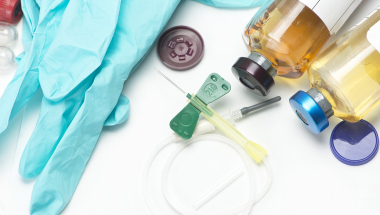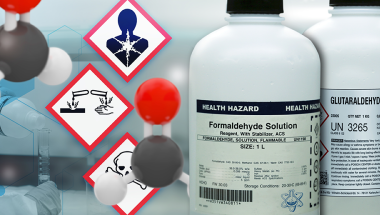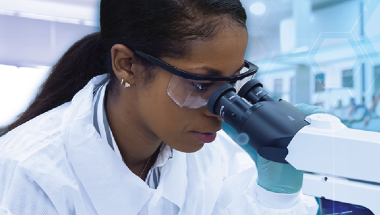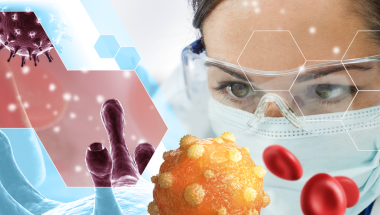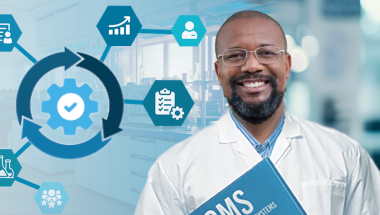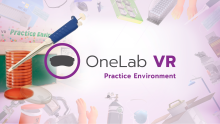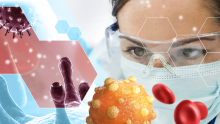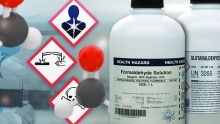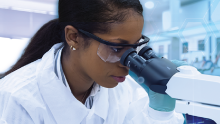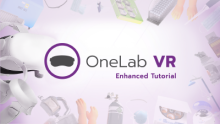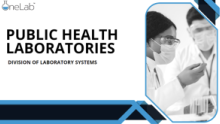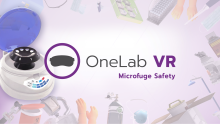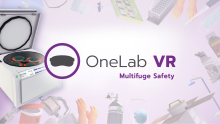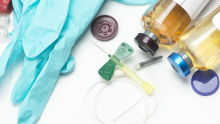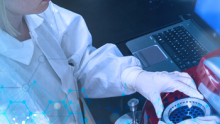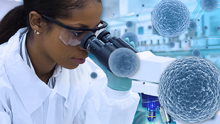Featured Courses
Training Courses & Topics
Course content is closed-captioned, where applicable. eLearning courses are optimized for a screen reader. If you need additional assistance, please contact REACH@cdc.gov.
Learn more about the Professional Acknowledgment for Continuing Education (P.A.C.E.®)
Core Science
Basic Microscopy: Microbiology Curriculum
Learn the components, setup, procedures, and care and maintenance of a bright field (compound) microscope.
- General Certificate
Basic Molecular Biology Module 1: Basic Science
Describe fundamental characteristics of DNA and RNA, nucleotide base-pairing rules, and basic techniques and workflow applied in molecular diagnostics.
- P.A.C.E.® credit
- General Certificate
Basic Molecular Biology Module 2: Laboratory Practice
Implement general biosafety and laboratory area flow practices, and minimize contamination.
- P.A.C.E.® credit
- General Certificate
Basic Molecular Biology Module 3: Nucleic Acid Extraction
Discuss nucleic acid extraction including extraction method selection, basic extraction steps, and nucleic acid analysis.
- General Certificate
Basic Molecular Biology Module 4: Polymerase Chain Reaction (PCR) and Real-Time PCR
Explain the principles of Polymerase Chain Reaction (PCR) and real-time PCR including PCR steps and product analysis, and real-time PCR characteristics.
- P.A.C.E.® credit
- General Certificate
OneLab VR: Practice Environment Scenario
OneLab VR Practice Environment resembles a high-school science classroom where learners are able to practice using laboratory equipment.
Safety
Fundamentals of Bloodborne Pathogens
This course provides training to help you develop the knowledge and skills to protect yourself and others while working with blood and OPIM. Your employer may require additional information and training to protect you from specific workplace hazard.
- P.A.C.E.® credit
- General Certificate
Fundamentals of Centrifuge Safety
Identify major parts of a centrifuge, types of centrifuges, potential hazards, how to work safely with a centrifuge, and emergency protocol. Implement proper practices for its safe and effective operations.
- P.A.C.E.® credit
- General Certificate
Fundamentals of Chemical Fume Hood Safety
Identify major components of a chemical fume hood and implement proper practices for its safe and effective operation.
- P.A.C.E.® credit
- General Certificate
Fundamentals of Communicating the Hazards of Laboratory Chemicals
This basic level eLearning course provides information on communicating the hazards of laboratory chemicals.
- P.A.C.E.® credit
- General Certificate
Fundamentals of Handling Compressed Gas Cylinders Safely
This course introduces clinical and public health laboratory professionals to the physical and chemical hazards associated with compressed gas and compressed gas cylinders, control measures to mitigate risks, and how to work safely with compressed gases and gas cylinders in the laboratory.
- P.A.C.E.® credit
- General Certificate
Fundamentals of Laboratory Safety
This course provides an overview of laboratory safety for clinical and public health laboratory personnel.
- General Certificate
Fundamentals of Methylene Chloride Safety
This basic-level course provides information on the chemical properties and adverse health effects associated with the use of methylene chloride, or dichloromethane (DCM), in clinical and public health laboratories.
- P.A.C.E.® credit
- General Certificate
Fundamentals of Personal Protective Equipment (PPE) in Clinical Laboratories
Apply risk management strategies to identify hazards, assess risks, and select appropriate personal protective equipment (PPE) options.
- P.A.C.E.® credit
- General Certificate
Fundamentals of Working Safely in a Biological Safety Cabinet (BSC)
Identify major parts of a Class II biological safety cabinet (BSC) and implement proper practices for its safe and effective operation.
- General Certificate
Fundamentals of Working Safely with Formaldehyde and Glutaraldehyde
This course aims to equip you with knowledge about the properties, health risks, hazard controls, work practices, and protective equipment needed to safely handle formaldehyde and glutaraldehyde.
- General Certificate
Introduction to Laboratory Risk Management (LRM)
Apply risk management principles and practices to laboratory settings.
- P.A.C.E.® credit
- General Certificate
LabTrainingVR: Biological Safety Cabinet Edition
A virtual reality (VR) course: Practice setting up, working in, decontaminating, and shutting down a biological safety cabinet (BSC) in a virtual laboratory.
LabTrainingVR: Personal Protective Equipment (PPE) Edition
Practice selecting the appropriate personal protective equipment (PPE) and properly donning and doffing it in a virtual museum.
Laboratory Fundamentals
Fundamentals of Public Health Laboratories
This basic course provides an overview of the 11 core functions of public health laboratories. This course also focuses on public health laboratories' role in the overall public health system, their relationship with key partners, and how they work together to serve communities.
- General Certificate
OneLab VR: Enhanced Tutorial Scenario
OneLab VR encompasses a 50,000-square-foot virtual facility focused on clinical and public health laboratory training. OneLab VR includes 12 different laboratories and more than 100 (and counting) laboratory-specific pieces of hardware and equipment.
Public Health Laboratories (PHL) 101
Public health laboratories focus on diseases and the health status of population groups. They perform limited diagnostic testing, reference testing, and disease surveillance.
These materials provide an overview of public health laboratory core functions and services.
For optimal experience, please use Chrome, Safari, or Firefox.
Routine Microscopy Procedures
This course is designed to explore the processes, procedures, and techniques necessary for completing routine microscopic examinations of laboratory specimens.
- P.A.C.E.® credit
- General Certificate
Informatics
Introduction to Laboratory Informatics: Life of a Result
Identify the recipients of laboratory data, explain data and results storage, and discuss communicating data and results to various stakeholders.
- General Certificate
Introduction to Laboratory Informatics: Life of a Specimen
Describe laboratory informatics enterprise, data relationships, data quality and standards, and specimen progression through the pre-analytic, analytic, and post-analytic phases.
- General Certificate
Introduction to Laboratory Information Management System (LIMS) & Other Information Systems
Explore Laboratory Information Management System (LIMS) functionality, the role of the LIMS interoperability, various information system and laboratory data regulations and standards, and the steps in implementing a LIMS.
- General Certificate
Preparedness and Response
Laboratory Continuity of Operations Planning (COOP)
Develop a laboratory continuity of operations plan (COOP).
- General Certificate
Safety, Preparedness and Response
OneLab VR: Autoclave Safety Scenario
OneLab VR encompasses 12 different laboratories in a 50,000-square-foot virtual facility created for clinical and public health laboratory training. It also includes over 100 (and counting) laboratory-specific pieces of hardware and equipment.
OneLab VR: Microfuge Safety Scenario
OneLab VR encompasses a 50,000-square-foot virtual facility focused on clinical and public health laboratory training. OneLab VR includes 12 different laboratories and over 100 (and counting) laboratory-specific pieces of hardware and equipment.
OneLab VR: Multifuge Safety Scenario
OneLab VR encompasses a 50,000-square-foot virtual facility focused on clinical and public health laboratory training. OneLab VR includes 12 different laboratories and over 100 (and counting) laboratory-specific pieces of hardware and equipment.
Packing and Shipping
OneLab VR: Packing and Shipping Dangerous Goods
The goal for this scenario is for the user to properly triple package the sample and safely transport it to the Specimen Receiving area for air shipping, then apply the proper marks and labels in the proper locations to the package and seal it.
Packing and Shipping Dangerous Goods: What the Laboratory Staff Must Know
This course offers a detailed study of packing and shipping Division 6.2 infectious substances and dry ice according to DOT and IATA regulations.
- P.A.C.E.® credit
- General Certificate
Diagnostic Testing
Ready? Set? Test! Patient Testing Is Important. Get the Right Results.
The training will help to assure that testing personnel have the basic training necessary to safely and accurately perform patient testing waived under the Clinical Laboratory Improvement Amendments of 1988.
- P.A.C.E.® credit
- General Certificate
- Other CE Type
Quality
Adult Blood Culture Collection
This activity is designed to increase knowledge and competency for adult blood culture collection to promote best practices and improve the laboratory diagnosis of bloodstream infections.
- General Certificate
- Other CE Type
Clinical Laboratory Improvement Amendments (CLIA) Personnel Qualifications and Responsibilities: High Complexity Testing
This course provides information on nonwaived, high complexity testing across various specialties and subspecialties.
- P.A.C.E.® credit
- General Certificate
- Other CE Type
Fundamentals of Quality Management Systems
Learn about key elements of Laboratory Quality Management systems.
- P.A.C.E.® credit
- Other CE Type
Introduction to Clinical Laboratory Improvement Amendments (CLIA) of 1988
Explore an overview of the CLIA Regulatory Program, CLIA Laboratory Testing and Quality Standards, and CLIA Program Oversight and Administration.
- P.A.C.E.® credit
- General Certificate
- Other CE Type
Introduction to Clinical Laboratory Improvement Amendments (CLIA) Proficiency Testing
This course provides foundational information about CLIA proficiency testing (PT) including the PT process, scoring procedures, and referral.
- P.A.C.E.® credit
- General Certificate
- Other CE Type

